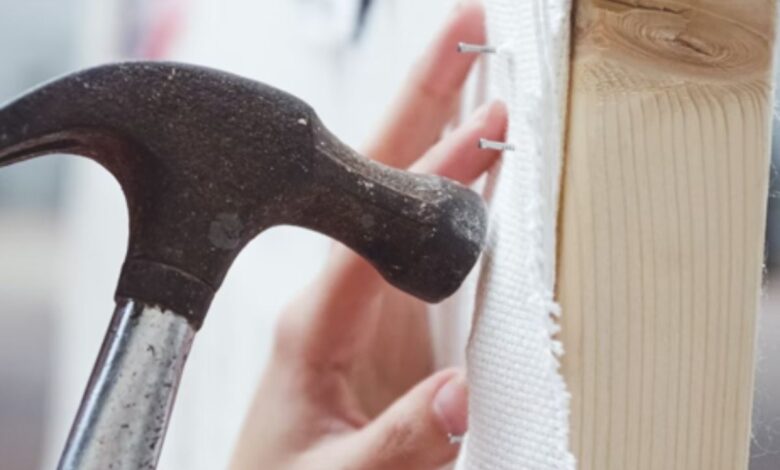Must-Have Tools Every Homeowner Needs

Calling a tradesperson every time something needs fixing around the home isn’t an option for most people. It’s far more cost-effective to pull on the tools and fix it yourself.
But not everyone’s a DIY expert and selecting the right tool for the job and using it correctly are skills many of us don’t possess.
So this guide provides a rundown on the key tools needed for a basic DIY toolkit, along with some other cool tools it would be handy to add over time.
Must-have tools for your DIY toolkit
The tools listed here are entry-level for basic household maintenance jobs, whether it’s tightening screws, hammering nails, or hanging pictures. You should also have some assorted nails, screws, nuts, bolts, and washers in your toolbox, plus super glue and duct tape, the handyman’s friends.
Hammer
A claw hammer is the number one tool every homeowner should have for hammering in nails and removing them. Choose one with a synthetic handle, as it will take more punishment and last longer than a wooden one.
Screwdriver
For tightening and loosening screws, you will need a flat head screwdriver and a Phillips head (cross-shaped) screwdriver, as most screws are either one or the other. Or a cordless screwdriver with a choice of head types is the ideal two-in-one tool.
Pliers
Pliers are useful for gripping, pulling, bending, and twisting things, often wire, and for acting as an extension of your fingers in hard-to-reach places. Long nose pliers (the most popular type) also have wire cutters built-in.
Wrench
You’ll need a wrench (spanner) for tightening and loosening and an adjustable wrench is the best kind to have, as the jaws can be widened or narrowed to fit any size nut or bolt.
Drill
You will need a drill when hanging pictures or putting up cupboards or shelves. A cordless power drill is a good choice, as it can often be used for driving screws as well as drilling holes. You will also need a selection of drill bits, which are usually included in your drill kit.
Saw
A hand saw is necessary for simple cutting jobs where the use of a power saw is impractical. A wood saw is ideal for cutting timber, such as repairing a cabinet or shelf.
Utility knife
Also known as a Stanley knife, this tool comes with disposable blades. It has a thousand and one uses from opening boxes and trimming carpet to cutting plastic and stripping insulated wire.
Tape measure
Every toolkit should contain a 6-meter (20 feet) steel measuring tape. Compact, flexible and retractable at the touch of a button, its use ensures accuracy whatever the job.
Handy tools to add over time
If you have room to store them, the following tools are not essential, but can be good to have on hand for specific DIY jobs;
Other hammers
As well as a claw hammer, other useful hammers include a ball hammer for working with metal, a rubber mallet to avoid damaging surfaces, and a sledgehammer for concrete and masonry jobs.
Other pliers
Along with long-nosed pliers, other useful types include slip-joint pliers, with two settings to allow for two widths, groove-joint pliers that allow for multiple widths, and locking pliers or Vice Grips, which can be locked to hold something in place.
Other wrenches
While an adjustable wrench is ideal for a basic toolkit, other types of wrench include open-ended spanners, which are sized to fit specific heads, ring spanners, which have a secure circular grip, and socket wrenches, which have a ratchet action for faster tightening and pipe wrenches which are ideal for basic plumbing jobs.
Other saws
As well as a wood saw, other useful saws include the tenon saw for neater cutting, the hacksaw for cutting through metal, the miter saw for creating neat, square, and angled cuts, and the ripsaw for slicing through wood like a chisel. A circular saw or jigsaw is also good to have if you have the space and budget.
Stud finder
This tool is ideal for finding studs (vertical frames) in walls when hanging pictures, shelves, or cabinets. Once the stud is located, you can screw or nail it into it with confidence and be sure that your fixture will be solidly mounted.
Ladder
Not all repairs are at eye level, so a step ladder is handy to have. An extension ladder on the other hand is essential if you undertake larger projects such as repairing your roof or installing a skylight to let in more natural light.
However much or little you invest in your DIY toolkit, the key things to remember are quality and safety. Even though they are usually more expensive, purchasing quality tools will ensure you have better tools with a much longer lifespan. And buying from reputable makers whose products are tested and approved will ensure your DIY efforts are both successful and injury-free.




